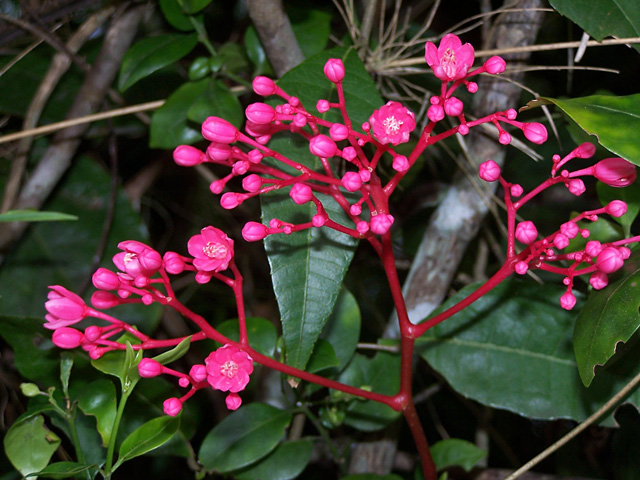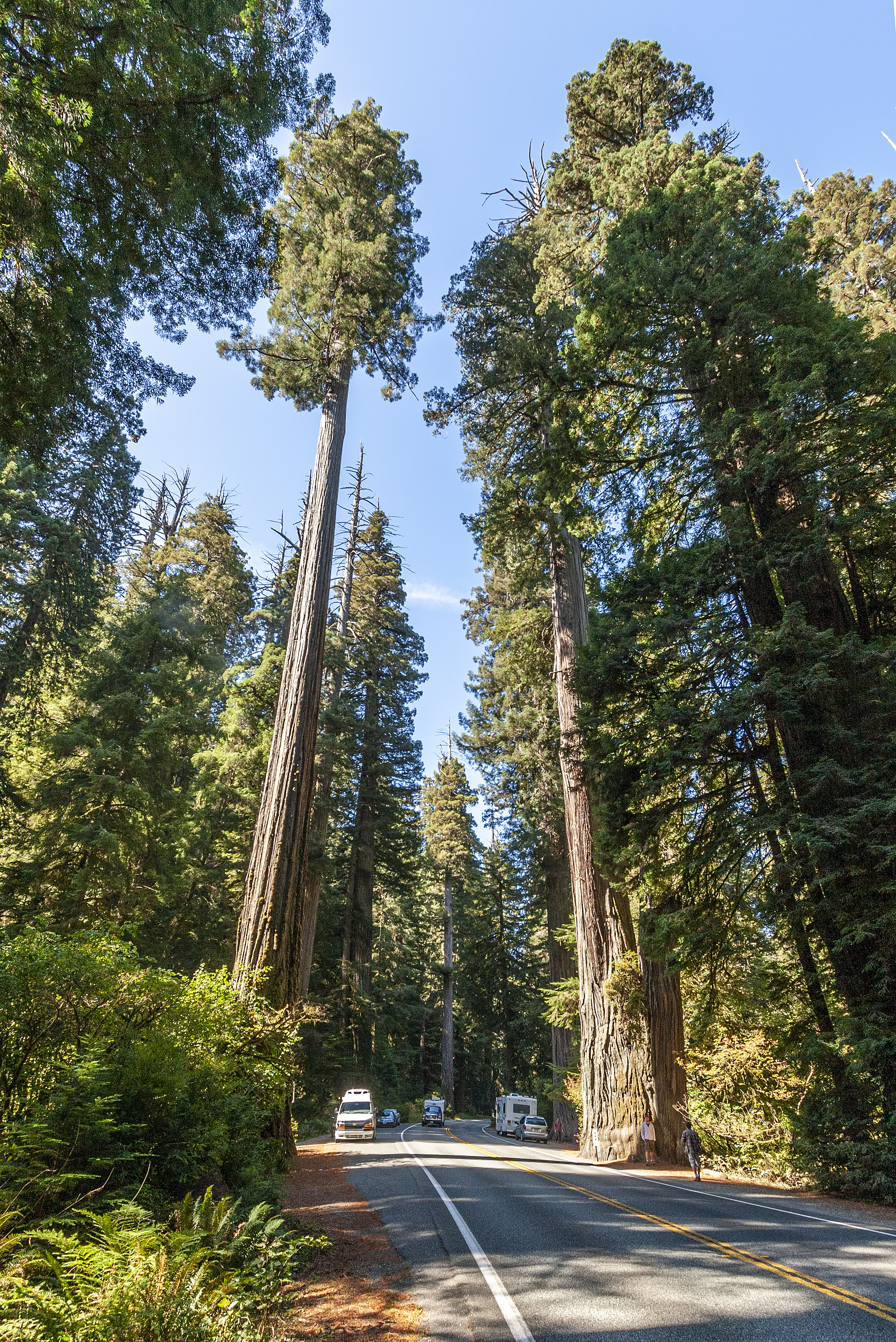|
Pierreodendron Africanum
''Pierreodendron'' is a genus of plants in the family Simaroubaceae. Its native range is western tropical Africa and is found in Angola, Benin, Cameroon, Congo, Gabon, Ghana, Ivory Coast, Liberia, Nigeria, Togo and Zaïre. It was first published by German botanist Adolf Engler in Bot. Jahrb. Syst. vol.39 on page 575 in 1907. The genus name of ''Pierreodendron'' is in honour of Jean Baptiste Louis Pierre (1833–1905), a French botanist known for his Asian studies, as well as ''dendron'' the Greek word for tree. Hans Peter Nooteboom (1934–2022) in 1962 (published in 1963), took a very broad view of the genus ''Quassia'' and included therein various genera including, ''Hannoa'' , '' Odyendyea'' , ''Pierreodendron'' , '' Samadera'' , '' Simaba'' and also '' Simarouba'' In 2007, molecular analyses of the Simaroubaceae family (Clayton et al., 2007), suggested the splitting up of genera ''Quassia'' again, with all Nooteboom's synonyms listed above being resurrected as independe ... [...More Info...] [...Related Items...] OR: [Wikipedia] [Google] [Baidu] |
Adolf Engler
Heinrich Gustav Adolf Engler (25 March 1844 – 10 October 1930) was a German botanist. He is notable for his work on plant taxonomy and phytogeography, such as ''Die natürlichen Pflanzenfamilien'' (''The Natural Plant Families''), edited with Karl Anton Eugen Prantl, Karl A. E. von Prantl. Even now, his system of plant classification, the Engler system, is still used by many Herbarium, herbaria and is followed by writers of many manuals and Flora (plants), floras. It is still the only system that treats all 'plants' (in the wider sense, algae to flowering plants) in such depth. Engler published a prodigious number of taxonomic works. He used various artists to illustrate his books, notably Joseph Pohl (1864–1939), an illustrator who had served an apprenticeship as a wood-engraver. Pohl's skill drew Engler's attention, starting a collaboration of some 40 years. Pohl produced more than 33 000 drawings in 6 000 plates for ''Die naturlichen Pflanzenfamilien''. He also illustrate ... [...More Info...] [...Related Items...] OR: [Wikipedia] [Google] [Baidu] |
Plants Of The World Online
Plants of the World Online (POWO) is an online taxonomic database published by the Royal Botanic Gardens, Kew. History Following the Convention on Biological Diversity, the Royal Botanic Gardens in Kew launched Plants of the World Online in March 2017 with the goal of creating an exhaustive online database of all seed-bearing plants worldwide. (Govaerts wrongly speaks of "Convention for Botanical Diversity (CBD)). The initial focus was on tropical African flora, particularly flora ''Zambesiaca'', flora of West and East Tropical Africa. Since March 2024, the website has displayed AI-generated predictions of the extinction risk for each plant. Description The database uses the same taxonomical source as the International Plant Names Index, which is the World Checklist of Vascular Plants (WCVP). The database contains information on the world's flora gathered from 250 years of botanical research. It aims to make available data from projects that no longer have an online ... [...More Info...] [...Related Items...] OR: [Wikipedia] [Google] [Baidu] |
Flora Of West-Central Tropical Africa
Flora (: floras or florae) is all the plant life present in a particular region or time, generally the naturally occurring ( indigenous) native plants. The corresponding term for animals is ''fauna'', and for fungi, it is '' funga''. Sometimes bacteria and fungi are also referred to as flora as in the terms ''gut flora'' or ''skin flora'' for purposes of specificity. Etymology The word "flora" comes from the Latin name of Flora, the goddess of plants, flowers, and fertility in Roman mythology. The technical term "flora" is then derived from a metonymy of this goddess at the end of the sixteenth century. It was first used in poetry to denote the natural vegetation of an area, but soon also assumed the meaning of a work cataloguing such vegetation. Moreover, "Flora" was used to refer to the flowers of an artificial garden in the seventeenth century. The distinction between vegetation (the general appearance of a community) and flora (the taxonomic composition of a community) wa ... [...More Info...] [...Related Items...] OR: [Wikipedia] [Google] [Baidu] |
Plants Described In 1907
Plants are the eukaryotes that form the kingdom Plantae; they are predominantly photosynthetic. This means that they obtain their energy from sunlight, using chloroplasts derived from endosymbiosis with cyanobacteria to produce sugars from carbon dioxide and water, using the green pigment chlorophyll. Exceptions are parasitic plants that have lost the genes for chlorophyll and photosynthesis, and obtain their energy from other plants or fungi. Most plants are multicellular, except for some green algae. Historically, as in Aristotle's biology, the plant kingdom encompassed all living things that were not animals, and included algae and fungi. Definitions have narrowed since then; current definitions exclude fungi and some of the algae. By the definition used in this article, plants form the clade Viridiplantae (green plants), which consists of the green algae and the embryophytes or land plants (hornworts, liverworts, mosses, lycophytes, ferns, conifers and other gymnosperm ... [...More Info...] [...Related Items...] OR: [Wikipedia] [Google] [Baidu] |
Taxonomy Articles Created By Polbot
280px, Generalized scheme of taxonomy Taxonomy is a practice and science concerned with classification or categorization. Typically, there are two parts to it: the development of an underlying scheme of classes (a taxonomy) and the allocation of things to the classes (classification). Originally, taxonomy referred only to the classification of organisms on the basis of shared characteristics. Today it also has a more general sense. It may refer to the classification of things or concepts, as well as to the principles underlying such work. Thus a taxonomy can be used to organize species, documents, videos or anything else. A taxonomy organizes taxonomic units known as "taxa" (singular "taxon"). Many are hierarchies. One function of a taxonomy is to help users more easily find what they are searching for. This may be effected in ways that include a library classification system and a search engine taxonomy. Etymology The word was coined in 1813 by the Swiss botanist A ... [...More Info...] [...Related Items...] OR: [Wikipedia] [Google] [Baidu] |
Sapindales Genera
Sapindales is an order of flowering plants. Well-known members of Sapindales include citrus; maples, horse-chestnuts, lychees and rambutans; mangos and cashews; frankincense and myrrh; mahogany and neem. The APG III system of 2009 includes it in the clade malvids (in rosids, in eudicots) with the following nine families: *Anacardiaceae * Biebersteiniaceae *Burseraceae * Kirkiaceae *Meliaceae * Nitrariaceae (including Peganaceae and Tetradiclidaceae) *Rutaceae *Sapindaceae *Simaroubaceae The APG II system of 2003 allowed the optional segregation of families now included in the Nitrariaceae. In the classification system of Dahlgren the Rutaceae were placed in the order Rutales, in the superorder Rutiflorae (also called Rutanae). The Cronquist system of 1981 used a somewhat different circumscription, including the following families: *Staphyleaceae * Melianthaceae * Bretschneideraceae * Akaniaceae *Sapindaceae *Hippocastanaceae * Aceraceae *Burseraceae *Anacardiaceae *Juli ... [...More Info...] [...Related Items...] OR: [Wikipedia] [Google] [Baidu] |
Pierreodendron
''Pierreodendron'' is a genus of plants in the family Simaroubaceae. Its native range is western tropical Africa and is found in Angola, Benin, Cameroon, Congo, Gabon, Ghana, Ivory Coast, Liberia, Nigeria, Togo and Zaïre. It was first published by German botanist Adolf Engler in Bot. Jahrb. Syst. vol.39 on page 575 in 1907. The genus name of ''Pierreodendron'' is in honour of Jean Baptiste Louis Pierre (1833–1905), a French botanist known for his Asian studies, as well as ''dendron'' the Greek word for tree. Hans Peter Nooteboom (1934–2022) in 1962 (published in 1963), took a very broad view of the genus ''Quassia'' and included therein various genera including, ''Hannoa'' , '' Odyendyea'' , ''Pierreodendron'' , '' Samadera'' , '' Simaba'' and also '' Simarouba'' In 2007, molecular analyses of the Simaroubaceae family (Clayton et al., 2007), suggested the splitting up of genera ''Quassia'' again, with all Nooteboom's synonyms listed above being resurrected as independe ... [...More Info...] [...Related Items...] OR: [Wikipedia] [Google] [Baidu] |
Pierreodendron Kerstingii
''Pierreodendron kerstingii'' is a species of tree in the family Simaroubaceae. It is endemic to West Africa and found in Ivory Coast, Ghana, Togo, and Benin. It is sometimes considered synonym of ''Pierreodendron africanum'', which would then be a widespread species distributed south to Angola and east to the Democratic Republic of the Congo. Description and uses It is a large forest tree growing to tall. The flowers are red and ripe fruits are yellow. The bark is used as insecticide and rat poison, and the extract has anti-tumor properties. Habitat and conservation ''Pierreodendron kerstingii'' occurs in heavily exploited, semi-deciduous forests. It is an uncommon species threatened by habitat loss Habitat destruction (also termed habitat loss or habitat reduction) occurs when a natural habitat is no longer able to support its native species. The organisms once living there have either moved elsewhere, or are dead, leading to a decrease .... References kerstingii ... [...More Info...] [...Related Items...] OR: [Wikipedia] [Google] [Baidu] |
Pierreodendron Africanum
''Pierreodendron'' is a genus of plants in the family Simaroubaceae. Its native range is western tropical Africa and is found in Angola, Benin, Cameroon, Congo, Gabon, Ghana, Ivory Coast, Liberia, Nigeria, Togo and Zaïre. It was first published by German botanist Adolf Engler in Bot. Jahrb. Syst. vol.39 on page 575 in 1907. The genus name of ''Pierreodendron'' is in honour of Jean Baptiste Louis Pierre (1833–1905), a French botanist known for his Asian studies, as well as ''dendron'' the Greek word for tree. Hans Peter Nooteboom (1934–2022) in 1962 (published in 1963), took a very broad view of the genus ''Quassia'' and included therein various genera including, ''Hannoa'' , '' Odyendyea'' , ''Pierreodendron'' , '' Samadera'' , '' Simaba'' and also '' Simarouba'' In 2007, molecular analyses of the Simaroubaceae family (Clayton et al., 2007), suggested the splitting up of genera ''Quassia'' again, with all Nooteboom's synonyms listed above being resurrected as independe ... [...More Info...] [...Related Items...] OR: [Wikipedia] [Google] [Baidu] |
Simarouba
''Simarouba'' is a genus of trees and shrubs in the family Simaroubaceae, native to the neotropics. It has been grouped in the subtribe Simaroubina along with the '' Simaba'' and ''Quassia'' genera. They have compound leaves, with between 1 and 12 pairs of alternate pinnate leaflets. Their flowers are unisexual, relatively small (around 1 cm long) and arranged in large panicles. Plants are dioecious, bearing only male or female flowers. The individual flowers have between 4 and 6 sepals and petals and between 8 and 12 stamens. The fruit is a carpophore and has up to 5 drupaceous mericarps. In 1944, Adolf Engler and Arthur Cronquist separated the species in the genus, based mainly on the morphology of their flowers, but also using differences in their leaf structure. ''S. amara'', ''S. glauca'' and ''S. versicolor'' are continental tree species and are often confused with each other, particularly in areas where more than one species is present in the flora. ''S. amara'' can b ... [...More Info...] [...Related Items...] OR: [Wikipedia] [Google] [Baidu] |
Plant
Plants are the eukaryotes that form the Kingdom (biology), kingdom Plantae; they are predominantly Photosynthesis, photosynthetic. This means that they obtain their energy from sunlight, using chloroplasts derived from endosymbiosis with cyanobacteria to produce sugars from carbon dioxide and water, using the green pigment chlorophyll. Exceptions are parasitic plants that have lost the genes for chlorophyll and photosynthesis, and obtain their energy from other plants or fungi. Most plants are multicellular organism, multicellular, except for some green algae. Historically, as in Aristotle's biology, the plant kingdom encompassed all living things that were not animals, and included algae and fungi. Definitions have narrowed since then; current definitions exclude fungi and some of the algae. By the definition used in this article, plants form the clade Viridiplantae (green plants), which consists of the green algae and the embryophytes or land plants (hornworts, liverworts ... [...More Info...] [...Related Items...] OR: [Wikipedia] [Google] [Baidu] |





